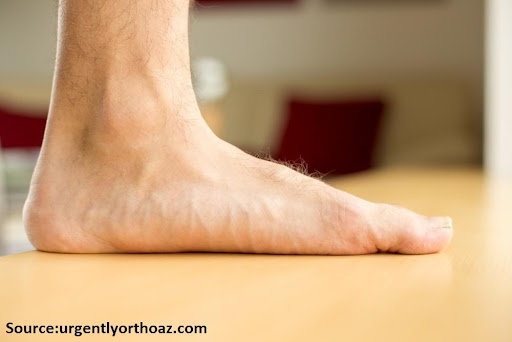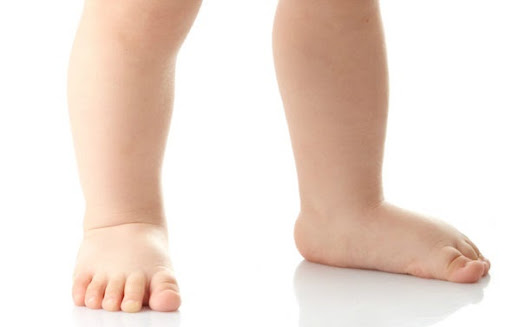Almost all children are born with flat, flexible feet. When a child takes birth, they grow in their life’s first year. Some children, however, may not have grown arches entirely until three to four years after they begin walking. Is your child also facing flat feet condition? Don’t worry; you can get your child a successful Flat foot treatment.
Our Dr. Ratnav Ratan is a skilled and experienced Orthopedic Doctor in Gurgaon, Delhi. He is one of the pioneers in Flat foot treatment in Gurgaon, Delhi. He has done several successful flat feet treatments. Many parents in Gurgaon have solved their children’s flat feet condition with Dr. Ratnav Ratan. Continue reading to know more about flat feet condition.
Understanding Children’s Foot Development
As their bones, muscles, and ligaments have not fully developed, each child takes birth with flat feet. You may overlook the development of the foot’s central arch, also known as the medial longitudinal arch, until your child reaches the age of three.
Until the age of ten, the arch continues to grow. In many cases, you will not achieve a mature arch foot until seven years of age. In layman’s terms, having flatfeet before a certain age (three to four years) is expected, so you should not be concerned as a parent. As your child develops and your child’s muscles strengthen, the flat foot corrects naturally itself. If it does not, you’ll need to see an orthopedic specialist. Says Dr Ratnav, orthopedist from Gurgaon.
What happens if you don’t correct your flat foot?
In medical terms, children with flat feet are known as ‘Pes Planus.’ When they stand, they have a foot’s fallen arch that makes complete contact with the surface.
Flat-footed people has two groups:
Symptomatic flatfeet include symptoms like pain and limitations of inactivity.
Asymptomatic flat feet do not show any symptoms.
As previously stated, there are two types of flat feet in children: asymptomatic and symptomatic. The total or partial collapse of the arch is a common feature of both symptomatic and asymptomatic patients. This classification will undoubtedly aid you and your specialist in determining this deformity. Still, it’s important to remember that the majority of cases of flat feet among children in Gurgaon, Delhi, are not severe and do not need treatment.
Recognizing When a Child Requires Medical Attention
Flatfeet only need treatment if they cause pain or interfere with a child’s ability to perform daily tasks.
The following are some common symptoms of the latter:
- Unusual walking pattern
- The rolling of ankles
- Foot pain after a period of inactivity
- Heel’s outward tilting
- Cramping and tingling sensations in the feet
- Stopping physical activities voluntary
- The formation of a bunion inside the foot (a deformity of the joints and big toe often caused because of poor foot mechanics)
What leads to flat feet?
A variety of conditions can cause flat feet. Some are extrinsic, while underlying health problems cause others.
The following are some of the most common causes of flat feet:
- Cerebral palsy
- Muscular dystrophy
- Juvenile arthritis
- Nervous system disorders
- Early Footwear
- Obesity
- Connective tissue disorder
- Accidents and injuries
Congenital Oblique Talus and Vertical Talus
Congenital Oblique and Vertical Talus Many children are born with the Talus, two types of foot deformities that could cause flat feet.
- Congenital oblique Talus is a severe form of Vertical Talus. The Talus is a tiny bone that connects the foot to the lower leg and sits in the ankle. The foot is pointing in the wrong direction with an oblique talus, but it can usually be aligned when you put it down. When compared to a regular foot, it appears severe but less so than a vertical talus foot.
- In Vertical Talus, the talus points in the wrong direction, resulting in a stiff foot with no arch called “rocker-bottom foot.”
Your specialist will treat such conditions with non-surgical and surgical methods, which are discussed in greater detail later.
There are several different types of flat feet.
Your child may have one of the below flat feet types based on their physical appearance and symptoms:
- Adaptable
The most prevalent flat feet are flexible flat feet, not linked with any pain or problems.
When you place your soles on the ground in this condition, they completely touch the ground. Only when you lift your feet off the ground can you see the arches of your feet.
In the vast majority of cases, flexible flat feet do not necessitate medical intervention or even support.
But, in rare cases, your child may require medical attention; the primary focus is on the root problem’s cause and how to treat it, with a secondary emphasis on flat feet.
- Stiff or Rigid
Rigid flat feet are a less common flat type foot that can cause complications.
The primary reason for this is due to abnormal foot development. It’s also known as “true flat foot.” It’s worth noting that stiff feet are not a common occurrence in children but rather in adults.
If left untreated, this flat foot type will worsen over time, causing excruciating swelling and pain. It can even progress to arthritis in some cases.
Anyone suffering from actual flat feet in Gurgaon, Delhi, may need surgery in the end. A tarsal coalition is a condition in which two or more bones are unusually linked, and it is one of the most common causes of rigid flat feet.
Resection surgery treats tarsal coalition, which can help you relieve pain while preserving the normal function of your foot.
Treatment for flat feet in Gurgaon, Delhi
Invasive and non-invasive techniques can treat flat feet, with the former being used less frequently than the latter.
The following are examples of non-invasive procedures:
- Exercise: Among the most effective ways to treat flat feet is through physical therapy. Your doctor can suggest a variety of activities for you to try. The most popular exercises include golf ball roll, heel cord stretching, arch lifts, and calf raises.
- Lifestyle changes: In many cases, obesity causes flat feet, and your doctor will prescribe a healthy routine for you. In some cases, you may have to wear orthopedic shoes, which provide additional comfort and cushioning.
- Understanding insoles: When selecting insoles for flat feet, consider your comfort first and see if the insole you choose helps you relieve pain and function typically. In recent years, 3D printed insoles have gotten a lot of attention in the footwear industry. It’s becoming a more popular option for people who want a little more comfort and are willing to pay a little more for it. Choosing a low arch with maximum support; a high, firm angle is more painful.
- Arch support While arch support is standard in decreasing the amount of time you spend on your feet. Arch supports are a type of orthotic device designed to provide support to your feet. These will provide additional cushioning to your feet’ contours.
Invasive treatment:
Anyone suffering from flat feet in Gurgaon, Delhi, should consider surgery as a last resort. Even if surgery is not the best option for you, it will undoubtedly benefit you and result positively. Your orthopedic surgeon will try to cure flat feet using surgical methods such as creating a false arch, repairing tendons, joints in place, or fusing the bones, depending on the problem that caused it.
We hope you could find all of the information you needed about flat foot due to this.


